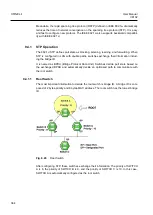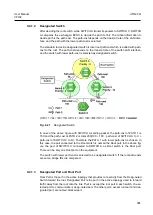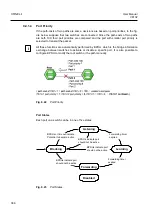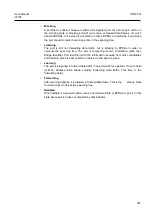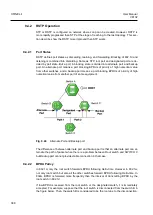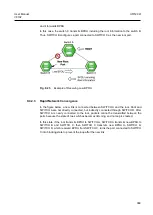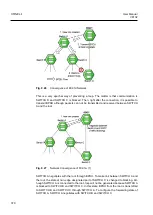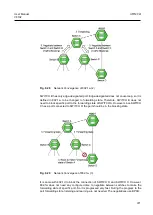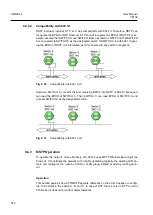
User Manual
UMN:CLI
V8102
365
9.4.1.2
Designated Switch
After deciding the root switch, while SWITCH A transmits packets to SWITCH C, SWITCH
A compares the exchanged BPDU to decide the path to link. The critical information to
decide path is the path-cost. The path-cost depends on the transmit rate of the LAN inter-
face, and the path with the lower path-cost is selected.
The standard to decide designated switch is total root path-cost which is added with path-
cost to the root. The path-cost depends on the transmit rate of the switch LAN interface,
and the switch with lower path-cost is selected as designated switch.
Fig. 9.21
Designated Switch
In case of the above figure with SWITCH A sending packet, the path-cost of PATH 1 is
150 and the path-cost of PATH 2 is total 200(100 + 100 ; path-cost of SWITCH A to C +
path-cost of SWITCH C to D). Therefore the PATH 1 with lower path-cost is chosen. In
this case, the port connected to the Root switch is named the Root port. In the above fig-
ure, the port of SWITCH C connected to SWITCH A as Root switch is the Root port.
There can be only one Root port on the equipment.
The switch with lower path-cost is selected to be designated switch. If the root path-costs
are same, bridge IDs are compared.
9.4.1.3
Designated Port and Root Port
Root Port is the port in the active topology that provides connectivity from the Desig-nated
Switch toward the root. Designated Port is the port in the active topology used to forward
traffic away from the root onto the link. That is, except the root port in each switch, the se-
lected port to communicate is desig-nated port. The other ports, except root port and des-
ignated port, are named blocked port.














